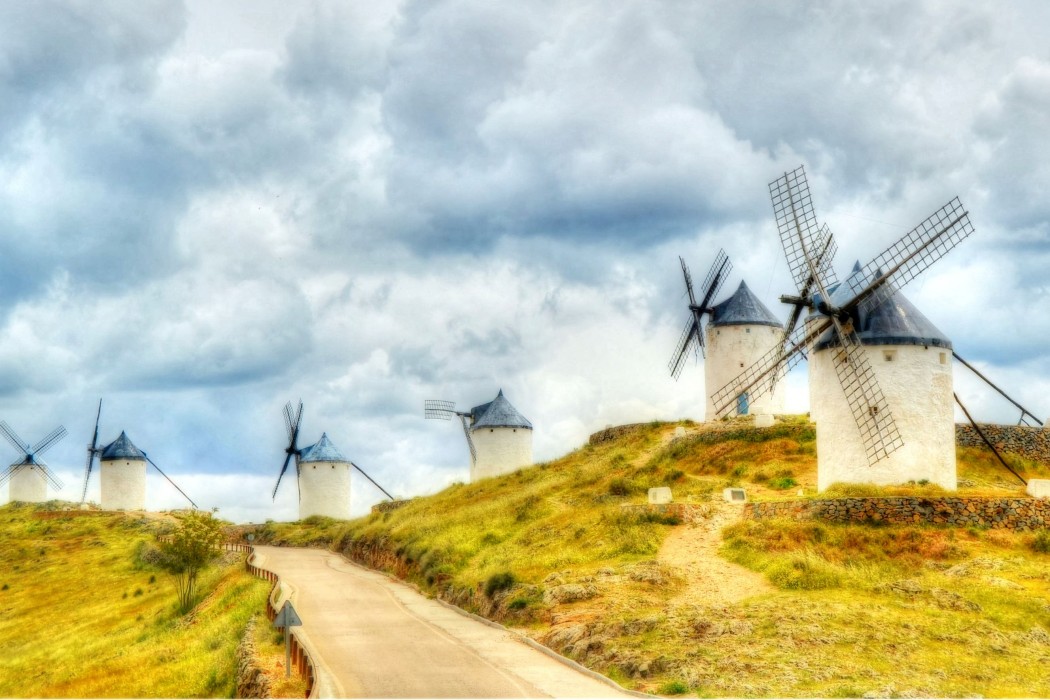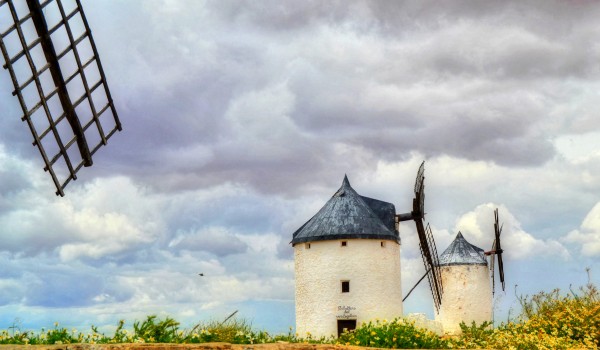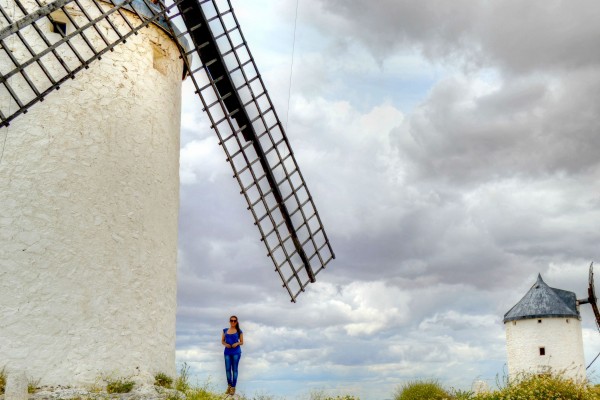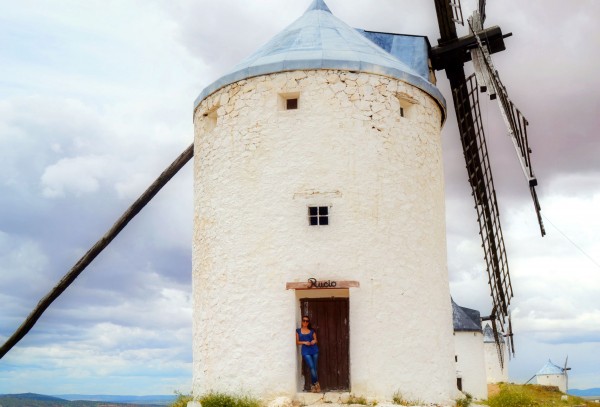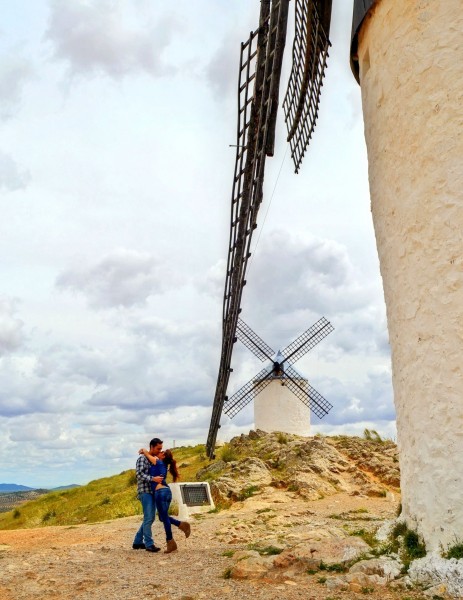Let me inspire you to discover the wonderful world of Spanish literature by traveling to Consuegra, a charming little village just 60 km south of the Imperial City of Toledo in Spain.
Located at the foot of the Cerro Calderico hill and surrounded by wide open plains and small mountain ranges, the windmills of Consuegra have become the quintessential symbol of Castilla La Mancha region, the land of the world-famous Manchego-cheese and of course, the land of Don Quixote.
The rugged, arid landscape dotted with romantic castles and windmills, the endless plains of vineyards and olive rows, the immense saffron and sunflower fields, the elegant Paradores, the fabulous gastronomy… A road trip through La Mancha will lead you on the adventure of a lifetime.
The “Giants” of Don Quijote
Spain has an exceedingly rich and varied literature. If you ever study Spanish, reading authors like Miguel de Cervantes will give you a great insight into our history and will help you to immerse into our culture.
Dating back to the half end of the XVI century, the 11 whitewashed windmills scattered across the hilltops of Consuegra are thought to be the ones that inspired Cervantes to create one of the world’s greatest literary masterpieces, The Ingenious Hidalgo Don Quixote of La Mancha.
Los molinos de viento immediately evoke the famous passage in which Don Quixote accompanied by his inseparable companion Sancho Panza, mitakes the windmills for giants.
“Look, your worship,” said Sancho; “what we see there are not giants but windmills, and what seem to be their arms are the sails that turned by the wind make the millstone go.”
“It is easy to see,” replied Don Quixote, “that thou art not used to this business of adventures; those are giants…”
If you pay attention to the details, you will notice that all the molinos are named after Don Quixote characters: Sancho, Bolero, Espartero, Mambrino, Rucio, Cardeno, Alcancia, Chispas, Callabero del Verde Gaban, Clavileno and Vista Alegre.
The one called Sancho is particularly interesting as it is set in motion each year for the Consuegra Saffron Festival.
Azafrán de La Mancha- The Exotic Red Gold
Towards the end of October, the saffron flowers turn the fields into a delicate sea of purple petals. Considered as red gold, azafrán (saffron in Spanish) is one of the most expensive and highly appreciated spices in the world.
The lilac-colored bloom isn´t what makes azafrán so expensive, but it is the trumpet shaped stigmas (three strands of bright red color) obtained from each flower what makes this fragant spice such a valuable condiment.
Around 250.000 crocus flowers are needed to obtain one kilogram of saffron. The immense labor involved in harvesting is the reason behind its enormous cost.
La Mancha is the craddle of the finest saffron. At dawn, families arrive in the fields to pick the saffron flowers into baskets. Around large kitchen tables, skilled mondadoras (petal strippers) begin the tedious work of removing the three deep red stigmas from each flower. Once collected, the stigmas are slowly toasted over the dying embers of a fire filling the air with an intense aroma.
The Festival de la Rosa del Azafrán (Saffron Rose Festival) is held in Consuegra at the end of the saffron harvest. Drawing visitors from all around the world, the three-day fiesta is an excellent opportunity to join the locals in both la monda (peeling) and el tueste (toasted) processes.
Latest posts by Rakel (see all)
- Hotel Can Joan Capó- Adults Only, in Sineu (Mallorca) - July 12, 2023
- Northern Light Ranch, Kittila (Finland) - January 23, 2022
- A Quick Guide to Mallorca - November 16, 2021

